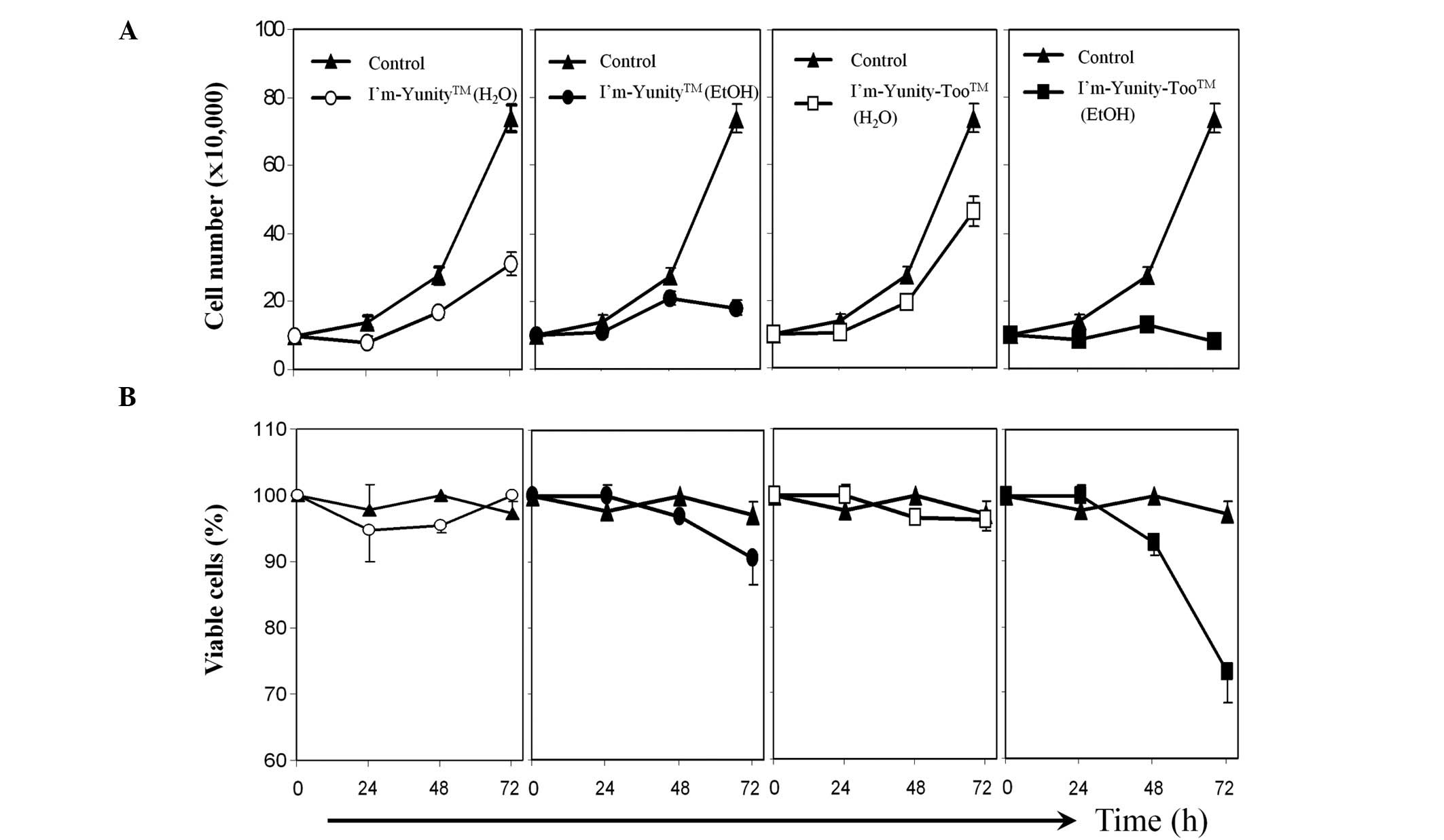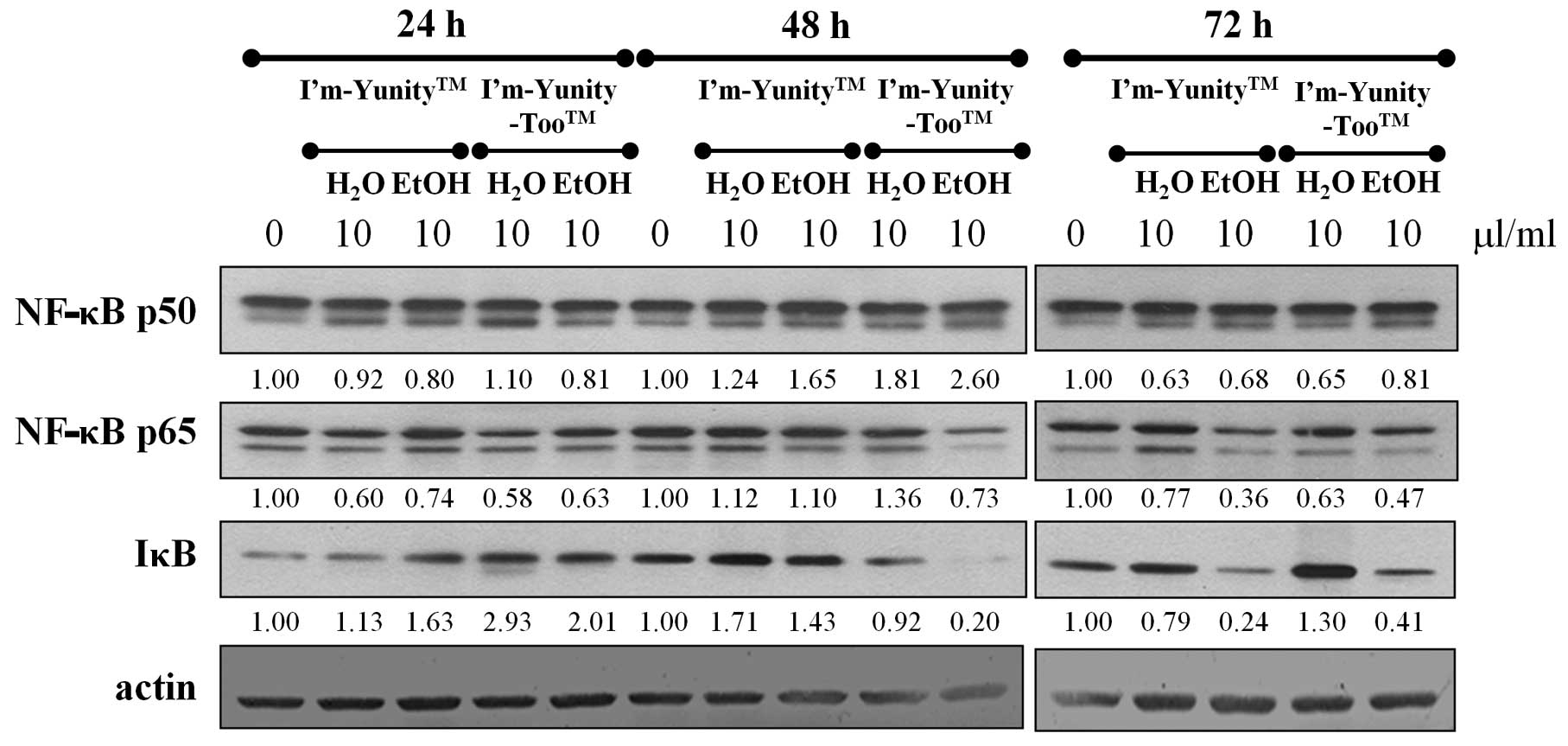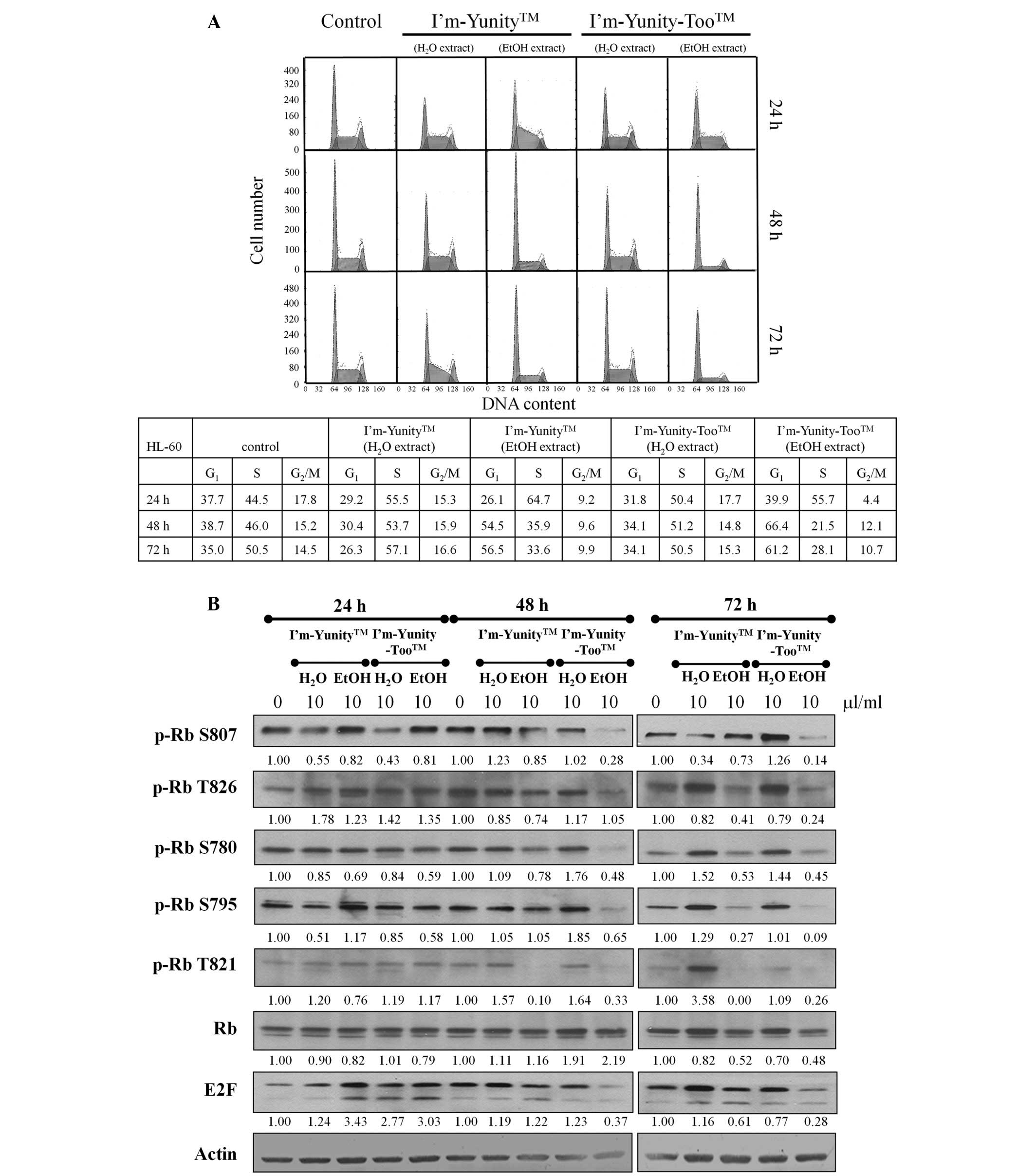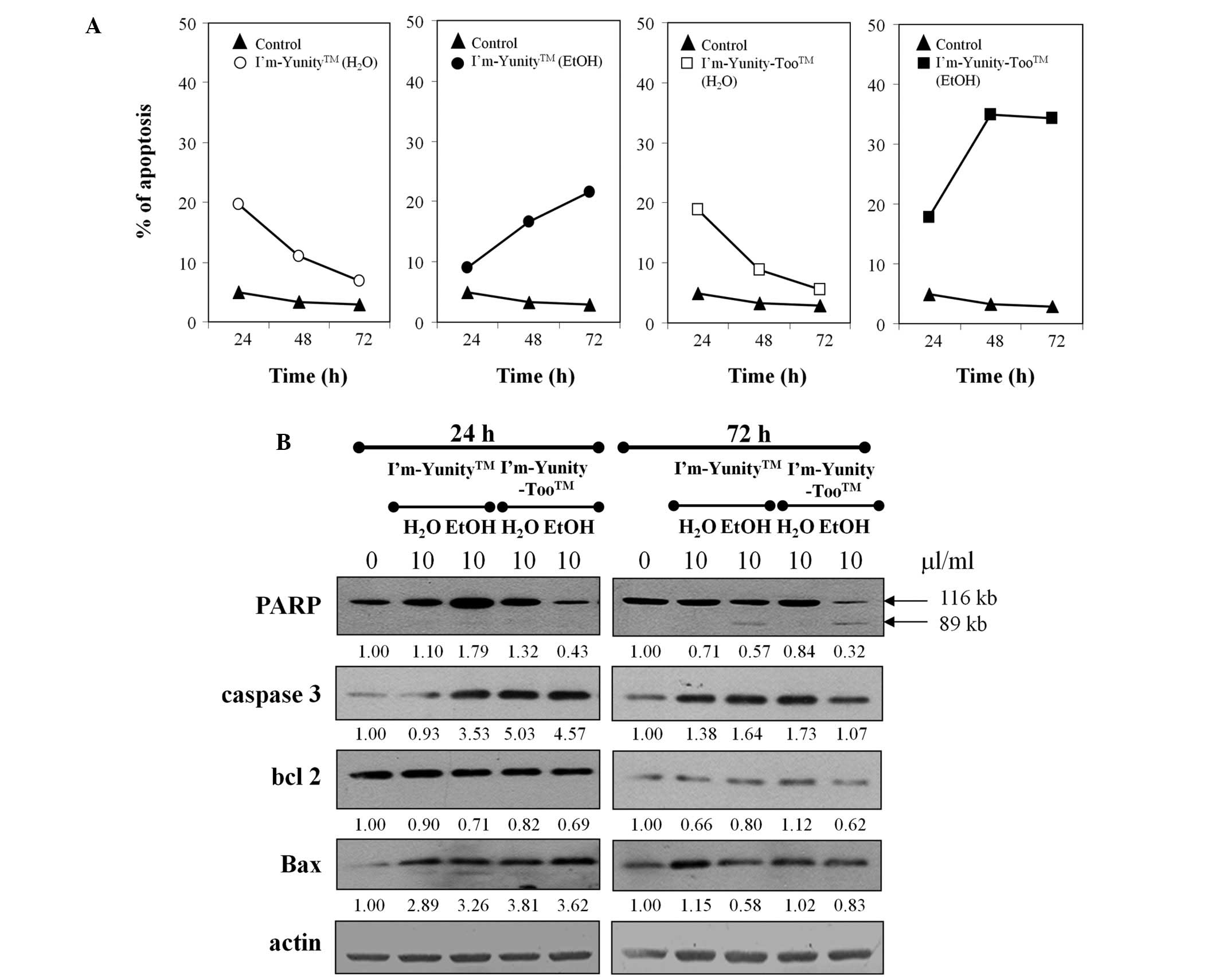|
1.
|
Doll R and Peto R: The causes of cancer:
quantitative estimates of avoidable risks of cancer in the United
States today. J Natl Cancer Inst. 66:1191–1308. 1981.PubMed/NCBI
|
|
2.
|
Steinmetz KA and Potter JD: Vegetables,
fruit, and cancer. I Epidemiology Cancer Causes Control. 2:325–357.
1991. View Article : Google Scholar
|
|
3.
|
Steinmetz KA and Potter JD: Vegetables,
fruit, and cancer prevention: a review. J Am Diet Assoc.
96:1027–1039. 1996. View Article : Google Scholar : PubMed/NCBI
|
|
4.
|
Willett WC: Diet, nutrition, and avoidable
cancer. Environ Health Perspect. 103(Suppl 8): 165–170. 1995.
View Article : Google Scholar : PubMed/NCBI
|
|
5.
|
Link LB and Potter JD: Raw versus cooked
vegetables and cancer risk. Cancer Epidemiol Biomarkers Prev.
13:1422–1435. 2004.PubMed/NCBI
|
|
6.
|
Potter JD: Vegetables, fruit, and cancer.
Lancet. 366:527–530. 2005. View Article : Google Scholar : PubMed/NCBI
|
|
7.
|
Surh YJ: Cancer chemoprevention with
dietary phytochemicals. Nat Rev Cancer. 3:768–780. 2003. View Article : Google Scholar : PubMed/NCBI
|
|
8.
|
Thomasset SC, Berry DP, Garcea G, Marczylo
T, Steward WP and Gescher AJ: Dietary polyphenolic phytochemicals -
promising cancer chemopreventive agents in humans? A review of
their clinical properties. Int J Cancer. 120:451–458. 2007.
View Article : Google Scholar
|
|
9.
|
de Kok TM, van Breda SG and Manson MM:
Mechanisms of combined action of different chemopreventive dietary
compounds: a review. Eur J Nutr. 47(Suppl 2): 51–59.
2008.PubMed/NCBI
|
|
10.
|
Link A, Balaguer F and Goel A: Cancer
chemoprevention by dietary polyphenols: promising role for
epigenetics. Biochem Pharmacol. 80:1771–1792. 2010. View Article : Google Scholar : PubMed/NCBI
|
|
11.
|
Lee KW, Bode AM and Dong Z: Molecular
targets of phytochemicals for cancer prevention. Nat Rev Cancer.
11:211–218. 2011. View
Article : Google Scholar : PubMed/NCBI
|
|
12.
|
Sliva D: Ganoderma lucidum (Reishi)
in cancer treatment. Integr Cancer Ther. 2:358–364. 2003.
View Article : Google Scholar
|
|
13.
|
Yuen JW and Gohel MD: Anticancer effects
of Ganoderma lucidum: a review of scientific evidence. Nutr
Cancer. 53:11–17. 2005.
|
|
14.
|
Paterson RR: Ganoderma - a therapeutic
fungal biofactory. Phytochemistry. 67:1985–2001. 2006. View Article : Google Scholar : PubMed/NCBI
|
|
15.
|
Zhou X, Lin J, Yin Y, Zhao J, Sun X and
Tang K: Ganodermataceae: natural products and their related
pharmacological functions. Am J Chin Med. 35:559–574. 2007.
View Article : Google Scholar : PubMed/NCBI
|
|
16.
|
Zhong JJ and Xiao JH: Secondary
metabolites from higher fungi: discovery, bioactivity, and
bioproduction. Adv Biochem Eng Biotechnol. 113:79–150.
2009.PubMed/NCBI
|
|
17.
|
Zhang J, Tang Q, Zhou C, et al: GLIS, a
bioactive proteoglycan fraction from Ganoderma lucidum,
displays anti-tumour activity by increasing both humoral and
cellular immune response. Life Sci. 87:628–637. 2010.PubMed/NCBI
|
|
18.
|
Wasser SP and Weis AL: Therapeutic effects
of substances occurring in higher Basidiomycetes mushrooms: a
modern perspective. Crit Rev Immunol. 19:65–96. 1999.PubMed/NCBI
|
|
19.
|
Cui J and Chisti Y: Polysaccharopeptides
of Coriolus versicolor: physiological activity, uses, and
production. Biotechnol Adv. 21:109–122. 2003.
|
|
20.
|
Kidd PM: The use of mushroom glucans and
proteoglycans in cancer treatment. Altern Med Rev. 5:4–27.
2000.PubMed/NCBI
|
|
21.
|
Ho CY, Kim CF, Leung KN, et al:
Coriolus versicolor (Yunzhi) extract attenuates growth of
human leukemia xenografts and induces apoptosis through the
mitochondrial pathway. Oncol Rep. 16:609–616. 2006.
|
|
22.
|
Nicandro JP, Tsourounis C, Frassetto L and
Guglielmo BJ: In vivo effect of I’m-Yunity on hepatic cytochrome
P450 3A4. J Herb Pharmacother. 7:39–56. 2007.
|
|
23.
|
Hui KP, Sit WH and Wan JM: Induction of S
phase cell arrest and caspase activation by polysaccharide peptide
isolated from Coriolus versicolor enhanced the cell
cycle-dependent activity and apoptotic cell death of doxorubicin
and etoposide, but not cytarabine in HL-60 cells. Oncol Rep.
14:145–155. 2005.PubMed/NCBI
|
|
24.
|
Hsieh TC, Kunicki J, Darzynkiewicz Z and
Wu JM: Effects of extracts of Coriolus versicolor
(I’m-Yunity) on cell-cycle progression and expression of
interleukins-1 beta, -6, and -8 in promyelocytic HL-60 leukemic
cells and mitogenically stimulated and nonstimulated human
lymphocytes. J Altern Complement Med. 8:591–602. 2002.PubMed/NCBI
|
|
25.
|
Zeng F, Hon CC, Sit WH, et al: Molecular
characterization of Coriolus versicolor PSP-induced
apoptosis in human promyelotic leukemic HL-60 cells using cDNA
microarray. Int J Oncol. 27:513–523. 2005.
|
|
26.
|
Hsieh TC, Wu P, Park S and Wu JM:
Induction of cell cycle changes and modulation of
apoptogenic/anti-apoptotic and extra-cellular signaling regulatory
protein expression by water extracts of I’m-Yunity (PSP). BMC
Complement Altern Med. 6:302006.PubMed/NCBI
|
|
27.
|
Hsieh TC and Wu JM: Differential control
of growth, cell cycle progression, and gene expression in human
estrogen receptor positive MCF-7 breast cancer cells by extracts
derived from polysaccharopeptide I’m-Yunity and Danshen and their
combination. Int J Oncol. 29:1215–1222. 2006.PubMed/NCBI
|
|
28.
|
Hu H, Ahn NS, Yang X, Lee YS and Kang KS:
Ganoderma lucidum extract induces cell cycle arrest and
apoptosis in MCF-7 human breast cancer cell. Int J Cancer.
102:250–253. 2002. View Article : Google Scholar
|
|
29.
|
Tsang KW, Lam CL, Yan C, et al:
Coriolus versicolor polysaccharide peptide slows progression
of advanced non-small cell lung cancer. Respir Med. 97:618–624.
2003. View Article : Google Scholar
|
|
30.
|
Wong CK, Bao YX, Wong EL, Leung PC, Fung
KP and Lam CW: Immunomodulatory activities of Yunzhi and Danshen in
post-treatment breast cancer patients. Am J Chin Med. 33:381–395.
2005. View Article : Google Scholar : PubMed/NCBI
|
|
31.
|
Wan JM, Sit WH and Louie JC:
Polysaccharopeptide enhances the anticancer activity of doxorubicin
and etoposide on human breast cancer cells ZR-75-30. Int J Oncol.
32:689–699. 2008.PubMed/NCBI
|
|
32.
|
Luk SU, Lee TK, Liu J, et al:
Chemopreventive effect of PSP through targeting of prostate cancer
stem cell-like population. PLoS One. 6:e198042011. View Article : Google Scholar : PubMed/NCBI
|
|
33.
|
Jiang J, Slivova V, Harvey K,
Valachovicova T and Sliva D: Ganoderma lucidum suppresses
growth of breast cancer cells through the inhibition of
Akt/NF-kappaB signaling. Nutr Cancer. 49:209–216. 2004. View Article : Google Scholar
|
|
34.
|
Yue GG, Fung KP, Tse GM, Leung PC and Lau
CB: Comparative studies of various ganoderma species and their
different parts with regard to their antitumor and immunomodulating
activities in vitro. J Altern Complement Med. 12:777–789. 2006.
View Article : Google Scholar : PubMed/NCBI
|
|
35.
|
Jiang J, Grieb B, Thyagarajan A and Sliva
D: Ganoderic acids suppress growth and invasive behavior of breast
cancer cells by modulating AP-1 and NF-κB signaling. Int J Mol Med.
21:577–584. 2008.PubMed/NCBI
|
|
36.
|
Weng CJ, Chau CF, Yen GC, Liao JW, Chen DH
and Chen KD: Inhibitory effects of Ganoderma lucidum on
tumorigenesis and metastasis of human hepatoma cells in cells and
animal models. J Agric Food Chem. 57:5049–5057. 2009.PubMed/NCBI
|
|
37.
|
Thyagarajan A, Jedinak A, Nguyen H, et al:
Triterpenes from Ganoderma lucidum induce autophagy in colon
cancer through the inhibition of p38 mitogen-activated kinase (p38
MAPK). Nutr Cancer. 62:630–640. 2010.
|
|
38.
|
Hsieh TC and Wu JM: Suppression of
proliferation and oxidative stress by extracts of Ganoderma
lucidum in the ovarian cancer cell line OVCAR-3. Int J Mol Med.
28:1065–1069. 2011.PubMed/NCBI
|
|
39.
|
Wu G, Qian Z, Guo J, et al: Ganoderma
lucidum extract induces G1 cell cycle arrest, and apoptosis in
human breast cancer cells. Am J Chin Med. 40:631–642. 2012.
View Article : Google Scholar
|
|
40.
|
Bao PP, Lu W, Cui Y, et al: Ginseng and
Ganoderma lucidum use after breast cancer diagnosis and
quality of life: a report from the Shanghai Breast Cancer Survival
Study. PLoS One. 7:e393432012.PubMed/NCBI
|
|
41.
|
DiPietrantonio AM, Hsieh TC, Olson SC and
Wu JM: Regulation of G1/S transition and induction of apoptosis in
HL-60 leukemia cells by fenretinide (4HPR). Int J Cancer. 78:53–61.
1998. View Article : Google Scholar : PubMed/NCBI
|
|
42.
|
DiPietrantonio AM, Hsieh TC, Juan G,
Traganos F, Darzynkiewicz Z and Wu JM: Fenretinide-induced caspase
3 activity involves increased protein stability in a mechanism
distinct from reactive oxygen species elevation. Cancer Res.
60:4331–4335. 2000.
|
|
43.
|
Elangovan S and Hsieh TC: Control of
cellular redox status and upregulation of quinone reductase NQO1
via Nrf2 activation by α-lipoic acid in human leukemia HL-60 cells.
Int J Oncol. 33:833–838. 2008.PubMed/NCBI
|
|
44.
|
Bedner E, Burfeind P, Hsieh TC, et al:
Cell cycle effects and induction of apoptosis caused by infection
of HL-60 cells with human granulocytic ehrlichiosis pathogen
measured by flow and laser scanning cytometry. Cytometry. 33:47–55.
1998. View Article : Google Scholar
|
|
45.
|
Smolewski P, Bedner E, Du L, et al:
Detection of caspases activation by fluorochrome-labeled
inhibitors: multiparameter analysis by laser scanning cytometry.
Cytometry. 44:73–82. 2001. View Article : Google Scholar : PubMed/NCBI
|
|
46.
|
Hsieh TC, Aguero-Rosenfeld ME, Wu JM, et
al: Cellular changes and induction of apoptosis in human
promyelocytic HL-60 cells infected with the agent of human
granulocytic ehrlichiosis (HGE). Biochem Biophys Res Commun.
232:298–303. 1997. View Article : Google Scholar : PubMed/NCBI
|
|
47.
|
Hsieh TC, Yang CJ, Lin CY, Lee YS and Wu
JM: Control of stability of cyclin D1 by quinone reductase 2 in
CWR22Rv1 prostate cancer cells. Carcinogenesis. 33:670–677. 2012.
View Article : Google Scholar : PubMed/NCBI
|
|
48.
|
Yang CJ, Lin CY, Hsieh TC, Olson SC and Wu
JM: Control of eotaxin-1 expression and release by resveratrol and
its metabolites in culture human pulmonary artery endothelial
cells. Am J Cardiovasc Dis. 1:16–30. 2011.PubMed/NCBI
|
|
49.
|
Hsieh TC: Uptake of resveratrol and role
of resveratrol-targeting protein, quinone reductase 2, in normally
cultured human prostate cells. Asian J Androl. 11:653–661. 2009.
View Article : Google Scholar : PubMed/NCBI
|
|
50.
|
Hsieh TC: Antiproliferative effects of
resveratrol and the mediating role of resveratrol targeting protein
NQO2 in androgen receptor-positive, hormone-non-responsive CWR22Rv1
cells. Anticancer Res. 29:3011–3017. 2009.PubMed/NCBI
|
|
51.
|
Lin CN, Tome WP and Won SJ: Novel
cytotoxic principles of Formosan Ganoderma lucidum. J Nat
Prod. 54:998–1002. 1991. View Article : Google Scholar : PubMed/NCBI
|













